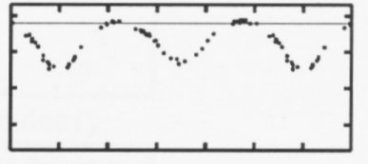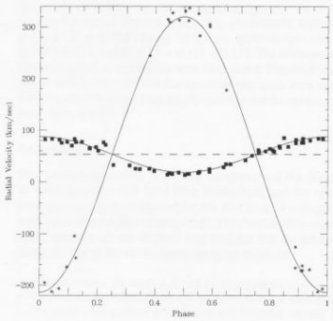

 |
 |
| Above, Epsilon CrA's brightness varies continuously as each star passes in front of the other, indictative of a contact binary. To the right, the radial velocity curves of the two stars differ enormously, showing that the principal star (the one that shows the least movement) is 8 times more massive than the secondary. Light curve from S. M. Rucinski in the Publications of the Astronomical Society of the Pacific; velocity curves from K.-D. Goecking and H. W. Duerbeck in Astronomy and Astrophysics. |